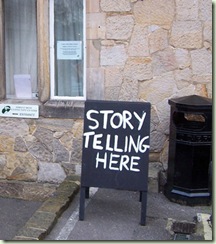Written by: Glenn McLaurin; State Farm Youth Advisory Board Member, Mid-Atlantic Zone Representative
Every year, the 30 young leaders from across the U.S. and Canada who comprise the State Farm Youth Advisory Board (SFYAB) convene to discuss how to best promote school-based service-learning and empower students and teachers to conduct outstanding projects that create lasting change in their communities. The Youth Advisory Board does more than talk, however; with the support of the State Farm Companies Foundation, the Board coordinates a $5 million-a-year service-learning funding program, administering grants ranging from $25,000 to $100,000 to support community-based, youth-led service-learning initiatives.
State Farm’s innovative service-learning funding model empowers young leaders to support fellow young leaders. SFYAB members lead every step of the grant administration process, from designing and marketing the annual Request-for-Proposals to reviewing the grant applications and selecting the recipients. This opportunity for an intensive, hands-on approach to supporting high-quality, youth-led service-learning projects is a learning exercise for Board members as well. Members gain insight into the needs and challenges of communities across the U.S. and Canada, and are exposed to the creative, inspiring approaches employed by teachers, nonprofits, and young leaders to find sustainable solutions and reduce social ills.
The Youth Advisory Board funds projects that address a range of community issues. The funding targets for the 2009-2010 grant cycle were financial education, access to higher education/closing the achievement gap, teen driver safety, environmental responsibility, and natural and societal disaster preparedness. Across this range of topics, however, all the projects funded shared several key traits – the initiatives clearly embraced the tenants of service-learning, sought to achieve sustainable solutions through intensive community engagement, partnership building, and a critical analysis of the root causes of the issues they sought to address, and were led by, rather than simply involving, K-12 youth.
The youth-leadership element of the projects funded by the Board is one of the most valued aspects of the YAB’s mission to promote service-learning in schools and communities across the U.S. and Canada. The SFYAB does not just believe in the potential of youth to make a difference, it invests in the ability of young leaders to serve as agents of change.
Allowing young people to lead service-learning initiatives amplifies both the educational and service benefits of the experience. With greater responsibility and a more personal investment in the project, youth gain a better understanding of the root causes of the issues they plan to address, and remain more dedicated and committed to overseeing the successful implementation and sustainability of their initiatives. The State Farm Youth Advisory Board encourages greater youth participation and representation in community and education-oriented organizations and agencies – students will benefit from the opportunity to become more active in their communities and schools, while receptive institutions will gain not just from the passion and energy of youth, but from their creativity and insight as well.
Several organizations exist which promote youth leadership through service and innovative education programs. Youth-led service and service-learning opportunities are routinely funded through Youth Service America and its programs, including Global Youth Service Day, Get Ur Good On™, and Semester of Service. Students seeking to realize their leadership capacity through exploration of their passions would do well to participate in The Roadtrip Nation Experience, an innovative curriculum designed to inspire young people through participant-led interviews with successful athletes, entrepreneurs, and politicians. The SFYAB encourages educators and students alike to explore these resources, and engage in critical conversations about the contributions young people can make to their schools and communities through dedicated service and leadership.
The State Farm Youth Advisory Board is committed to supporting youth-led service-learning initiatives, and invests in the power of young people to create lasting change in their schools and communities. Opportunities for funding will be available on February 1, 2011 and can be found at www.sfyab.com.



